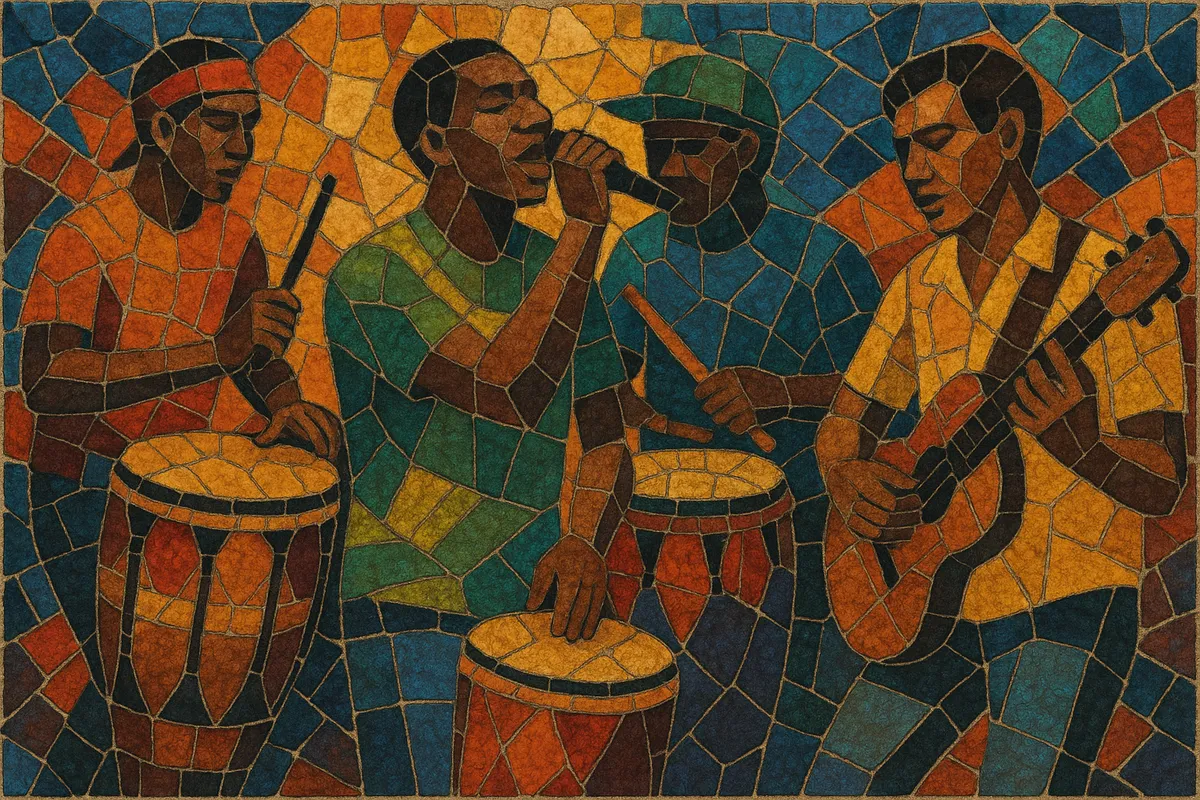Bouyon is a high-energy dance music from the Caribbean island of Dominica, built on driving drum-machine grooves, infectious call-and-response hooks, and dense layers of percussion.
It fuses the cadence-lypso legacy of Dominica with elements of compas, calypso, and soca, while also borrowing the toasting style and electronic heft of dancehall. Early pioneers translated traditional jing ping rhythms into synthesizers and MIDI rigs, yielding a propulsive, carnival-ready sound marked by booming kick drums, rolling snare lines, cowbells, and bright synth stabs.
Lyrics are often shouted or chanted in English and Kwéyòl (Creole), with crowd-hyping commands and local references designed for street parades, fetes, and sound-systems. Modern bouyon frequently pushes faster tempos and bass-forward production, spawning crossover hybrids like bouyon-soca and influencing neighboring island scenes.
Bouyon emerged in Dominica when bands like WCK (Windward Caribbean Kulture) began modernizing local dance traditions. They adapted the rhythmic feel of jing ping and the melodic sensibility of cadence-lypso, powered by drum machines, sequencers, and synthesizers. This innovation produced a tougher, more percussive party music that matched the amplification and mobility of carnival culture.
Through the 1990s, WCK’s recordings and relentless live performances shaped bouyon’s core identity: four-on-the-floor kicks, offbeat snares, cowbell patterns, low-end bass synths, and chant-like vocals. The sound spread through regional festivals and radio, competing and hybridizing with soca, compas, calypso, and zouk. Local bands refined the live format—full rhythm sections plus keyboards and electronic percussion—to keep the music both band-driven and club-ready.
As production tools became cheaper and faster, bouyon embraced even punchier drums and higher tempos. Dominica’s new wave of bands pushed a more aggressive, crowd-commanding approach, while collaborations with Trinidad, St. Lucia, Guadeloupe, and Martinique accelerated hybrids such as bouyon-soca. In St. Lucia, a raw, chant-forward offshoot known as Dennery Segment emerged, drawing on bouyon’s drum language and party ethos.
Bouyon remains Dominica’s signature party sound and a fixture of Carnival. It thrives on stage-driven performance, MC-led hype, and bass-heavy mixes that translate well to both street parades and club systems. The genre continues to influence neighboring islands’ festival music and to generate new fusions with global bass and contemporary Caribbean pop.


